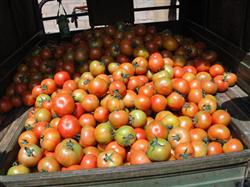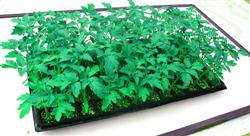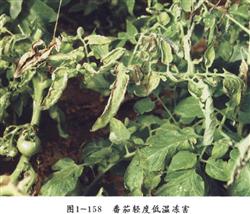How to store tomatoes in winter

The key to winter tomato storage is heat preservation. Tomatoes for winter storage are green-ripening fruits harvested from plastic greenhouses grown late in autumn. Green ripe tomato most afraid of low temperature, if stored below 8℃ for a long time, the fruit will be frozen, water-like spots appear on the surface subsidence, browning, fruit around the pedicle into light brown, serious white mold, penicillium or black mold. Serious freezing injury can cause tomato water extravasation, the whole fruit was translucent water-like corruption. The results showed that tomato fruits in green ripening stage should be red ripened slowly at 10~14℃, and then stored at 5~7℃. The relative humidity of air should be kept at 85%~90%. If the humidity is low, the fruit will lose water excessively, the pericarp will shrink and the fragrance will become weak. Now the common winter storage preservation methods are introduced as follows: 1 storage method using Yangqi storage, can be spread in the border with wheat straw or straw and other insulation materials, green ripe fruit placed on top, 15~20 cm thick is appropriate. Cover with plastic film and keep the temperature at 12~14℃, not lower than 10℃. Under this condition, the fruit can be slowly red ripened. In case of continuous sunny days, the ridge temperature rises, and the grass curtain can be covered for shade. As the fruit matures, it is selected at any time for listing, or moved to 5~7℃ for storage. 2 storage method In a warm room that can maintain a temperature of not less than 8 ° C, the ground is covered with a layer of straw or wheat straw, and then a layer of plastic film, and the green ripe fruit is placed on the film, about 20 cm thick, covered with plastic film. After the fruit ripens, reduce the temperature to 5~7℃.
- Prev

Pay attention to temperature and Light Control Technology of Tomato in Winter
Due to the low temperature, overcast and rainy weather, low temperature and high humidity, tomato seedling cultivation in spring often leads to the occurrence of seedling diseases such as quenching disease, which leads to seedling failure. Therefore, the place with loose soil, fertile soil, sunny terrain, no stagnant water and no eggplant crops within 2 years should be selected as the seedbed. Generally choose cloudy or sunny days.
- Next

Management techniques of Tomato after Frost injury in greenhouse
The cultivation of tomato in greenhouse often leads to different degrees of freezing injury due to abnormal weather changes. In those who were lightly frozen, the growth stagnated and the plants yellowed. After individual restoration of growth, the plants were short, the leaves were small, the nodes were short, the flower topping appeared, the yield was low and the quality decreased. For those who are frozen, if they are not remedied in time, they will not be able to grow and wither.
Related
- Where is it suitable to grow horseradish in China? it is expected to see the middle altitude horseradish in Alishan.
- How to prevent tomato virus disease reasonably? (Control methods included)
- Many people like to plant towel gourd on the balcony. What are the main points of this method and management?
- What crops can chili peppers be mixed with?
- Fertilization techniques and matters needing attention in Tomato
- What are the grafting techniques for peach seedlings in spring?
- Harm and control methods of root swelling disease of Chinese cabbage
- What are the pests of sweet potatoes? How to prevent and cure it?
- Symptoms, causes and Control methods of navel Rot in Tomato
- The cause of "Cucumber rotten bibcock" in Farmers' planting Cucumber and its Control Plan

